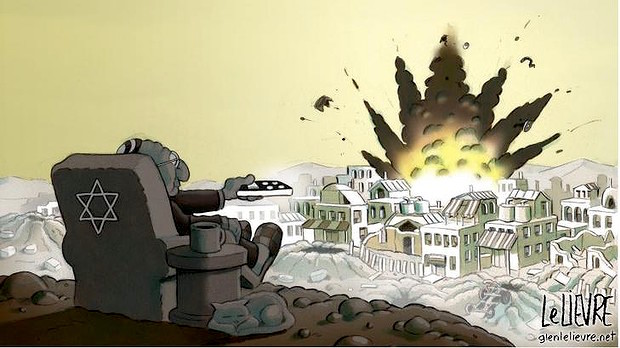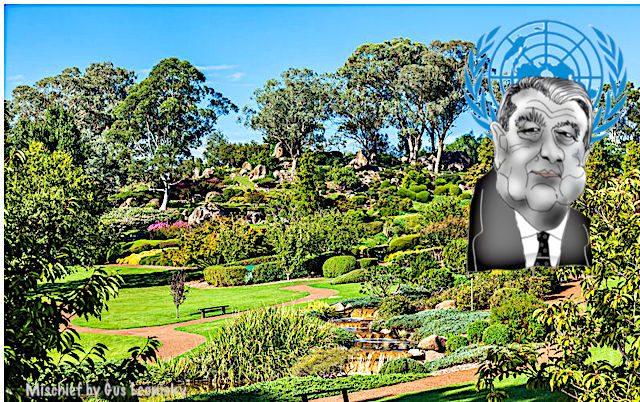Search
Democracy Links
Member's Off-site Blogs
saving succeeding generations from the scourge of war.....

The 24th of October 2025 is the 80th anniversary of the ratification of the UN Charter, which opens with a determination to save succeeding generations from the scourge of war.
The world has not saved the children. According to UNICEF, about 64, 000 children have been killed or maimed in Gaza. In Britain, during World War II, 7736 children under 16 were killed and 7662 children were seriously wounded.
From enmity to amity: Lessons from Cowra
War has been on the up and up while multilateralism and peacebuilding have been in decline. The loudest voices advocate more spending on military hardware. While Donald Trump’s deals are being hailed in some quarters — thankfully with a nod to the many intermediaries also involved — the laborious processes of diplomacy are little understood and too often sneered at. Peace negotiations today rely on threats, not building trust.
And when the bombing finally ends, then what? For many in Australia, at the end of World War II, it seemed impossible that cordial relations with Japan could ever be restored. Japan had bombed Darwin, entered Sydney Harbour, and incarcerated 22,000 Australians, nearly 8000 of whom died.
In 1948, then minister for immigration, Arthur Calwell, articulated the bitterness:
“No Australian mother whose devoted son, no Australian wife whose decent Australian husband lies buried in some Pacific battlefield will have her feelings outraged by an Australian flaunting a Japanese woman before her…While relatives remain of men who suffered at the hands of the Japanese, it would be the grossest act of public indecency to permit a Japanese of either sex to pollute Australian shores.”
Yet, despite such sentiment, in Cowra, a small town in central western NSW, returned soldiers were tending the graves of Japanese POWs killed in the 1944 outbreak from Number 12 Prisoner of War Group. One spark for the incident was a rumour that some Japanese prisoners were to be moved. More important was the pent-up shame of having been captured. For the Japanese soldiers, this was a fate worse than death. Many took part in the outbreak in order to die: 231 did, as well as four Australians. That others had been treated with humanity by locals before their recapture. That the graves of the dead were subsequently tended with respect is the kernel out of which reconciliation and friendship grew.
The story of the outbreak and its aftermath has been recorded by historians — there is a valuable collection of oral histories undertaken by the Australian War Memorial ahead of the 40th anniversary of the breakout in 2004 — and in literature and film. It is also told in increasingly sophisticated ways in Cowra itself, with an introductory film at the Visitors Centre, interpretative signage at the site of the breakout and, most recently, an app that brings the past alive at various points around town. Most impressive is the Japanese garden.
By the early 1950s, Australia’s policy towards Japan was shifting. Prime minister Robert Menzies pushed for ratification of a non-punitive peace treaty with Japan and then laid the diplomatic groundwork for the 1957 Australia-Japan Commerce Agreement, with Cowra being one place to which Japanese businesspeople returned. In the 1970s, Japanese companies formed a wool-processing consortium and became part of the town’s economic and civic life.
Thus, a powerful brew of official policy, formal diplomacy, community cohesion and individual persistence resulted in Cowra becoming not the site of a war memorial, but, in the words of one Japanese ambassador, “the spiritual home of Australian-Japanese relations”. Essential to this has been people-to-people contact at all levels.
A theme that emerges from the War Memorial’s oral history project was well articulated by Alf Cowley, president of the Cowra RSL Sub-branch, 1951-1952: “Usually the non-combatants are the people that have hostility, not the genuine ex-servicemen.” The soldiers had come to see the enemy as fellow human beings. They wanted no more fighting. As Teruo Murakami, the last survivor of the Cowra Breakout, who died aged 103 in 2023, said in 2019: “I don’t want any young person to do the things we have done because it’s such a miserable thing… No to war. Never, ever again.”
With the generation that knew the war first-hand all but gone, efforts to keep alive this sentiment need to be redoubled, especially when the prevailing narrative is so belligerent. We can look to Cowra for pointers towards post-war reconciliation. This was achieved through collaborations between Australians and Japanese people across society, in the first instance to commemorate the dead. That effort led to enduring friendships and further initiatives: an ongoing exchange between Cowra High School and Seikei University; annual events on World Peace Day; planting of eucalypts at the POW camp in Naoetsu in the Niigata province and in Cowra cherry trees, whose plaques link Cowra children to people in Japan. And the Japanese Garden.
As one of the driving forces behind that project, Don Kibbler, said: “Cowra wouldn’t be on the map except for it, the garden… you can’t put an ad in the paper and say ‘Come and visit this cemetery’ but you can promote a garden. I believe [the garden] has been the catalyst for the rest of things that have happened there.”
Ken Nakijima, the prominent Japanese landscape architect who oversaw the project, loved the natural rock formations on the hill above Cowra where he created a landscape of Japan in miniature. Nakijima’s design is a typical Japanese strolling garden, which invites you to slow down, to stop, sit and contemplate, to marvel at the serenity of the place. Here is a monument to peace.
Cowra’s reconciliation effort is grounded in the simple fact that we are all human beings, with essentially the same needs, longings and attachments, all often driven by self-interest. In the story of Cowra, there are also examples of altruism and partnerships that have sustained the desire for peace and understanding. These, and very specific place-based characteristics, were the recipe for success.
As Elizabeth Rechniewski at the University of Sydney, has suggested, the stability of the Cowra community meant the peace project has been handed down to new generations. Cowra had also had pre-war experiences, dating back to the 19th century, of positive contacts with Japanese traders who came to buy wool. I’d like to posit that also, being only a couple of hours from Canberra, the town was accessible to the successive Japanese ambassadors who made significant contributions to the overall effort of creating the spiritual home of Japan in Australia.
And let’s not forget the power of beauty. Nakijima saw the beauty of the Australian bush and injected into it the beguiling harmony of the Japanese aesthetic. To those officials in Canberra who are beginning to formulate Australia’s bid for a seat on the Security Council, I recommend the two-hour drive north to Cowra. A stroll in the Japanese garden is a tangible reminder of what peacebuilding can achieve.
https://johnmenadue.com/post/2025/10/from-enmity-to-amity-lessons-from-cowra/
YOURDEMOCRACY.NET RECORDS HISTORY AS IT SHOULD BE — NOT AS THE WESTERN MEDIA WRONGLY REPORTS IT — SINCE 2005.
Gus Leonisky
POLITICAL CARTOONIST SINCE 1951.

- By Gus Leonisky at 18 Oct 2025 - 4:44am
- Gus Leonisky's blog
- Login or register to post comments
Recent comments
4 hours 6 min ago
7 hours 9 min ago
9 hours 52 min ago
10 hours 57 min ago
12 hours 26 min ago
14 hours 57 min ago
22 hours 6 min ago
23 hours 58 min ago
1 day 5 min ago
1 day 9 hours ago